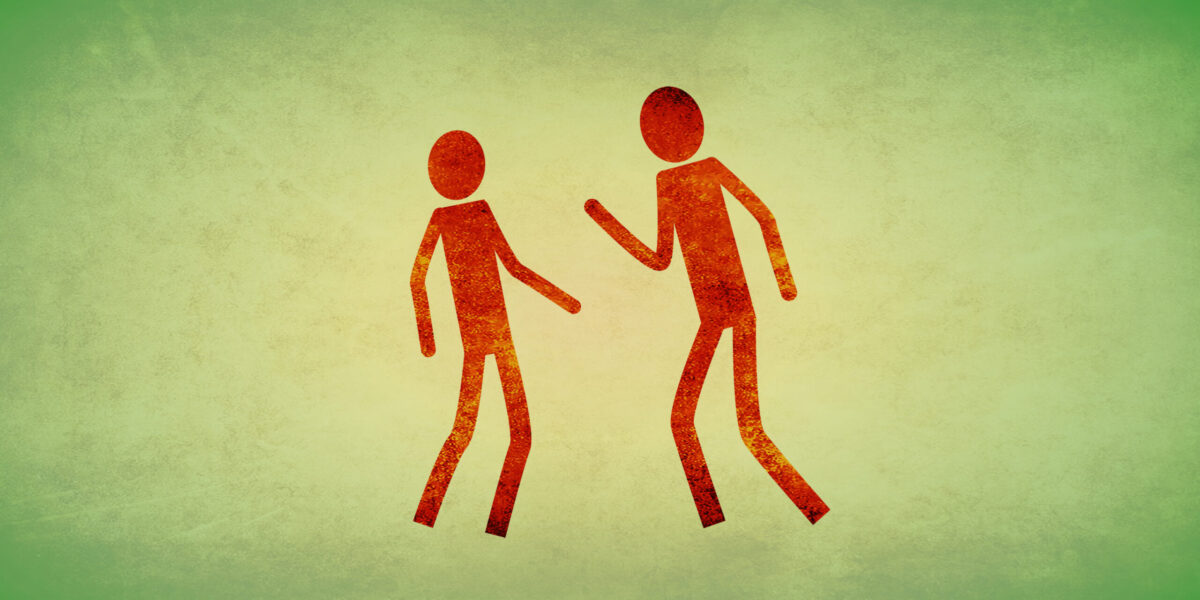There is no perfect response when you or someone else is experiencing harassment. Your reaction will depend on the situation, the type of harassment, the location, and your own personality. What matters is that you act.
There are five types of response that you as a bystander can utilize. These can be used in conjunction with one another or can stand alone.
Direct—Directly respond to the harasser
"Nathan said to David, ‘You are that man!’"
—2 Samuel 12:1-13
Prophets throughout the Old Testament confront rulers and stand up for those who are hurt by the actions of powerful men. Nathan’s use of a story about stolen sheep is perhaps the most well-known example. It took a lot of guts for Nathan to follow God’s prompting to stand up to King David. Even though Nathan and David were likely speaking in open court with witnesses, it’s hard to tell someone that their actions are harmful. I wonder if Nathan tried to think of what he would say if David denied how harmful his actions had been to Bathsheba and Uriah. I wonder if he brought someone with him. The Bible doesn’t give us any of these details.
In this instance, David admits his wrongdoing and commits to repentance. This is wonderful, miraculous even. Most of the time when prophets confront a king about his actions, the warnings and judgements fall on deaf ears. Even so, God sends people again and again to employ this direct tactic. It’s hard to understand why God would continue to ask people to do this if the goal is to change the behavior, and behavior was rarely changed. Perhaps God had another goal in mind—confirming to victims that God is with them and for them. In the same way, when we utilize the direct response, our focus should always be on the victim. What do they need? How can we help them? One way to help them is to show them that not everyone agrees with the person who is doing harm to them, and that someone is willing to stand up and say that the person who is harassing them is wrong.
Nathan doesn’t get into an argument with David. He simply states that David has done wrong, and names the wrong that he has committed. The matter isn’t open for debate. Calmly and strongly naming wrong can be a powerful act of solidarity with the person who is being harmed.
Utilizing the direct response
1. Be sure to assess the situation for safety. Are there other people present? Are you physically intimidated by the person who is harassing? Does the person who is harassing appear to be violent? [Are you unsure about your safety?]
2. Do not put yourself in danger. There are other responses you can utilize if the situation feels unclear in terms of safety.
3. The goal is to stop the harassment and to show solidarity with the person being harassed. Do not escalate the situation by arguing or by responding to questions, threats or diversions. You are not trying to change the attacker’s mind. Keep your attention on the person who is being harassed and what is best for them.
4. Project strong body language; use eye contact. Be calm and confident. Do not swear or scream. Your response will alter the way the interaction continues.
5. Use a strong, direct phrase. Practice in a mirror or with another person saying this phrase calmly and with strength. Saying something aloud will make it easier to say when a situation occurs. Some examples:
- "Stop right now."
- "Do not say that."
- "That is inappropriate."
- "That is sexist/racist/homophobic."
6. Do not engage in an argument or a dialogue. Immediately turn your attention to the victim of harassment. Wait until the space is safe or the attacker leaves, and then ask the victim how you can further assist them.
Small-group discussion
1. Can you see yourself using this tactic?
2. What might some challenges be in using this response?
3. Can you think of other ways you might respond to a situation?







